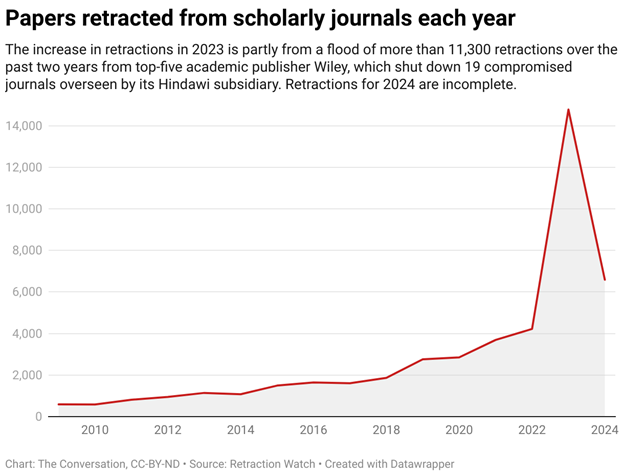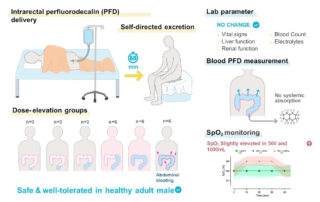The Growing Problem with Bogus Research
We need to do something about the hundreds of thousands of published fake scientific papers undermining research advances

A growing amount of research isn’t research at all
While many of the changes to scientific research publishing over the past decade have been positive, as I’ve noted before, there are plenty of people willing to game the system for their own advantage. We were reminded of this a few weeks ago when an article published in The Conversation highlighted the fact that while some 55,000 scientific papers have been officially retracted to date, hundreds of thousands of bogus papers are still in circulation. These papers distort scientific literature, making it harder for legitimate researchers to find accurate, reliable information.

Root Causes: Flaws in Academic Publishing
As The Conversation article notes, among the main problems are “paper mills.” Supposed scientific journals that are in fact shadowy commercial operations profiting from the wholesale publication of fraudulent scholarly research. Paper mills operate on a “pay-to-play” model where the journal makes money by charging authors to publish their research. The more papers published, the more the journal profits, and a rigorous review process interferes with that. So, rather than the standard (read: slow and detailed) process, these publishers manipulate it, sometimes through peer review rings or fabricating reviewers, other times by outright bribery of editors:
Some publishers may try to pick reviewers they deem more likely to accept papers, because rejecting a manuscript can mean losing out on thousands of dollars in publication fees. Worse, some corrupt scientists form peer review rings. Paper mills may create fake peer reviewers. Others may bribe editors or plant agents on journal editorial boards…
Fake research is particularly harmful in fields like medicine and cancer research where misleading data can delay life-saving treatments. Scientists often unknowingly base their work on fraudulent findings, wasting time and resources. Even when fraud is detected (often by independent researchers and amateur sleuths), journals are slow to retract problematic papers, further contaminating the academic record.
Searching for Solutions
A number of researchers and organizations are attempting to tackle the bogus research problem through the use of technology. The Cochrane Collaboration is developing tools to detect and automatically exclude fraudulent research. Technology firms like Argos, Morressier, Signals, and Clear Skies’ Papermill Alarm are all working on systems to help verify research integrity including AI-driven tools that can screen millions of papers for fraudulent patterns.
Of course, the problem with paper mills won’t go away until the financial incentives do, which will require a re-ordering of an industry model that currently generates billions of dollars every year. With more than 50,000 journals accepting money to publish papers, this is no small undertaking and unlikely to happen any time in the near future.
The article’s author’s note, however, a good step in the right direction would be to mandate greater openness and transparency in the publication and peer review process. Journals should make all peer review reports openly available, even for the research they decline to publish. Additionally, as vigorous peer review is critical to the recognition of valuable research, it should be recognized as a scholarly contribution on par with the original article.
A final measure should be to force publishers to act more swiftly when fraudulent research is exposed. Many will resist this as it can affect the journal’s reputation, but those who embrace it will also enjoy a higher standing in the scientific community, and perhaps benefit financially from it.
A Long Way to Go
While the problem of bogus research—and those who game the system to their advantage—isn’t about to go away soon, if the scientific community can come together and start demanding greater transparency and scrutiny in research publishing, we all will benefit.
Once we have a handle on separating the real from the fake, we can get down to the next task which is identifying the trustworthy and valuable information in a rising sea of scientific research. That’s when the real breakthroughs begin.






